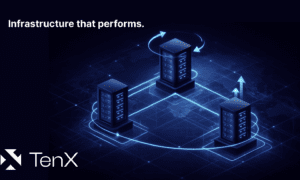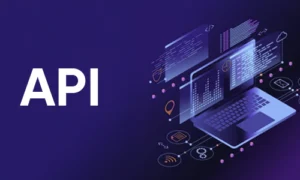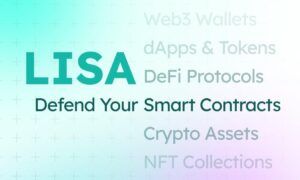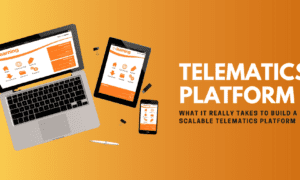Begin any blockchain project with a thorough assessment of its safety measures. This critical step safeguards against potential vulnerabilities that could jeopardize operational integrity. A detailed examination report will outline identified weaknesses, enabling teams to address them proactively before deployment.
Engage a reputable third-party evaluator experienced in analyzing smart systems. These specialists provide objective insights and highlight risks that internal teams might overlook. Their findings, alongside actionable recommendations, form the backbone of a robust safety framework, ensuring resilience against attacks.
Focus on specific areas such as code audits, testing protocols, and compliance checks. Ensure that the evaluation includes a comprehensive analysis of access controls and data handling practices. Thorough assessments in these domains not only protect assets but also enhance user trust in the implemented solution.
Identifying Common Vulnerabilities in Smart Contracts
Smart contract reviews are essential for ensuring the security and reliability of decentralized applications. Conduct thorough audits for reentrancy flaws. Attackers can exploit these by repeatedly calling functions before the initial execution completes, leading to unexpected behavior and fund loss. Always use checks-effects-interactions patterns to mitigate this risk. Ensure proper visibility of functions. Functions should be declared as public, external, internal, or private based on intended access levels. Inadvertent exposure can lead to unauthorized interactions.
Arithmetic Errors
Utilize libraries such as SafeMath to prevent overflow and underflow during arithmetic operations. Unchecked operations can lead to significant asset discrepancies. Incorporate range checks where necessary.
Access Control Issues
Implement stringent access controls using modifiers to restrict critical functions. Unauthorized access can compromise the integrity of the application. Verify ownership and permissions rigorously.
Use pattern recognition to identify potential vulnerabilities. Familiarize with common attack vectors, including timestamp reliance and gas limit assumptions, to strengthen the overall robustness of the application.
Interpreting the Findings of a Security Review Report
Focus on the identified vulnerabilities and prioritize them based on severity. Classify issues into categories such as critical, high, medium, and low. This classification aids in addressing the most significant threats first, allowing for efficient allocation of resources.
Consider the context in which each vulnerability exists. Analyze how it may impact the broader system and its functionalities. Grasp the potential consequences of an exploit to assess risk accurately.
Review suggested remediation strategies provided in the analysis. These recommendations should include specific coding changes, architectural adjustments, or additional measures like multi-signature implementation. Implement these thoroughly to fortify the application.
Evaluate the methodology of the audit. Understand the tools and techniques used during the exploration as this impacts the results’ reliability. Verify that multiple approaches were employed to comprehensively cover various attack vectors.
Ponder over the recommendations for best practices. Emphasize adherence to industry standards and guidelines that would enhance the overall robustness of the code beyond the immediate findings. Continuous improvement in development practices minimizes future risks.
Maintain ongoing communication with auditors. Clarify any ambiguous findings and seek deeper insights into complex issues. This interaction fosters a more profound understanding and can reveal additional layers of concern.
Finally, document the response to findings meticulously. Record actions taken for each issue and the rationale behind decisions made. This documentation serves as a valuable reference for future audits and assists in tracking the progress of remediation efforts.
Best Practices for Implementing Review Recommendations
Integrate feedback directly into the development process. Ensure that developers are aware of identified vulnerabilities and suggested improvements. Organize regular workshops where participants can discuss best approaches for implementing changes.
Prioritize recommendations based on risk assessment. Focus on addressing high-impact issues first. Utilize established risk metrics to categorize findings, allowing for a structured approach in remediation.
Establish a verification mechanism. After implementing changes, conduct testing to validate that recommendations were executed correctly. Automated tests can expedite this process, providing quick feedback on the success of modifications.
Create a documentation strategy. Maintain clear records of changes made in response to identified risks, explaining the rationale behind decisions. This aids in accountability and provides context for future audits.
Engage third-party assessments periodically. External insights bring fresh perspectives and can identify overlooked vulnerabilities. Schedule assessments regularly to ensure ongoing compliance and robustness.
Foster a culture of continuous improvement. Encourage team members to seek ongoing education on emerging threats and mitigation techniques. This proactive stance strengthens overall resilience against potential exploits.
Utilize coding standards that emphasize safety. Adopt frameworks or libraries with built-in protections. Consistency in applying coding norms minimizes the likelihood of vulnerabilities arising from human error.
Incorporate feedback loops. After changes are made, solicit input from various stakeholders to ensure the solutions are effective and align with project goals. This multi-faceted approach enhances the quality of the work.
Maintain an incident response plan. In cases where vulnerabilities are exploited despite precautions, having a clear procedure in place will enable swift action to mitigate damages.
Q&A: Understanding Smart Contract Security Review Reports
What are Smart Contract Security Review Reports?
Smart Contract Security Review Reports are detailed documents that assess the security of smart contracts deployed on a blockchain. These reports typically include an evaluation of the contract’s code for vulnerabilities, analysis of potential attack vectors, and recommendations for improvements. The goal is to identify and mitigate security risks before the contract is put into production, ensuring the safety of funds and data involved.
Why is it important to have a Smart Contract Security Review?
A Smart Contract Security Review is crucial due to the irreversible nature of blockchain transactions. If a smart contract contains vulnerabilities, attackers can exploit them, leading to potential financial losses. Conducting a thorough review helps protect both the developers and the users by identifying risks early on, which can save resources and preserve the integrity of the blockchain application.
What kinds of vulnerabilities do these reviews commonly identify?
Common vulnerabilities identified in smart contracts include reentrancy attacks, gas limit issues, integer overflows/underflows, and incorrect access control. Each of these vulnerabilities can lead to various forms of exploitation, such as unauthorized fund withdrawals or unexpected changes to contract logic. A thorough review will evaluate the code against these and other known vulnerabilities to enhance security.
Who conducts these security reviews, and what qualifications should they have?
Security reviews are typically conducted by specialized firms or independent professionals with expertise in blockchain technology and smart contract development. Ideal candidates should have a strong background in programming languages like Solidity or Vyper, experience with audit tools, and a deep understanding of blockchain security best practices. Their qualifications often include relevant certifications and a portfolio of previously audited contracts.
What should developers do after receiving a Smart Contract Security Review Report?
After receiving a Security Review Report, developers should carefully analyze the findings and implement the suggested modifications to address any identified vulnerabilities. It’s also advisable to conduct a follow-up review after making revisions to ensure that the corrections effectively mitigate the risks. Additionally, developers should consider ongoing security practices, including regular code audits and keeping abreast of new vulnerabilities, to maintain the security of the contract over time.
Image source: Freepik



































